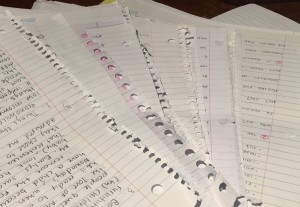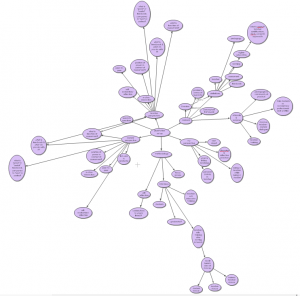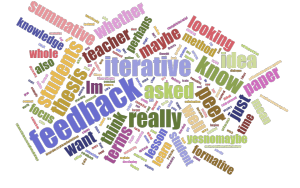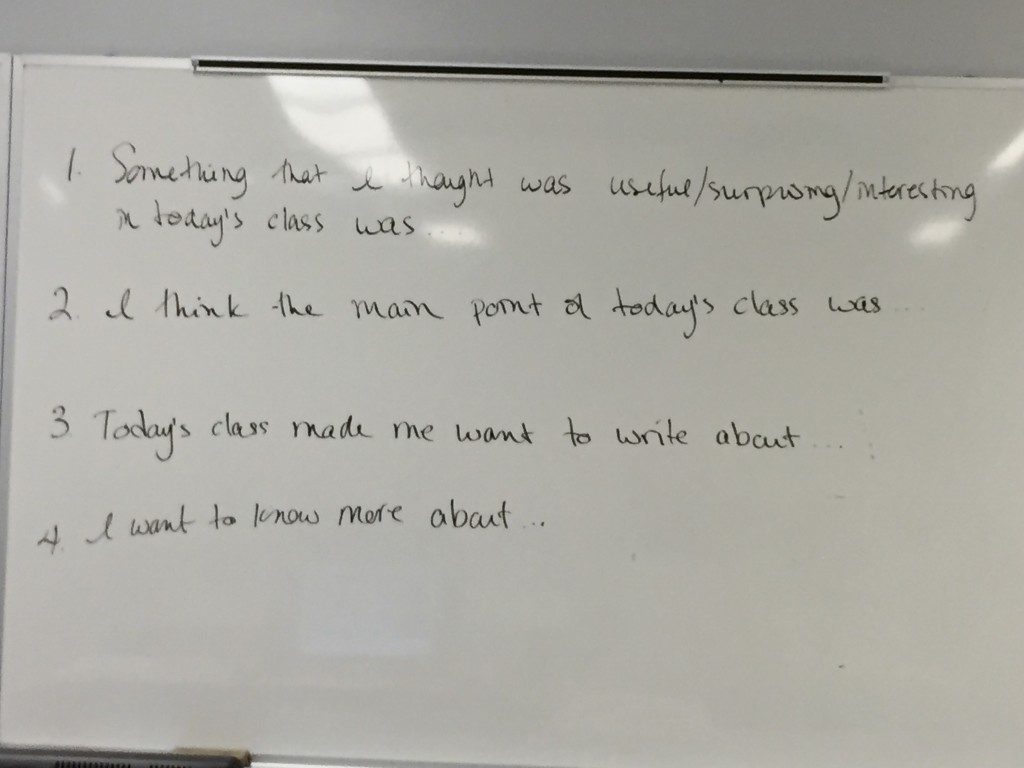I had a sudden flash of inspiration this week, and that flash has turned into a whole laser show.
I’ve been trying out various immediate feedback techniques in class, as described elsewhere on this blog. This semester, I am teaching my Montreal Writers course (you can check out our Facebook page), and our first novel is Gabrielle Roy’s classic The Tin Flute. If you’re not familiar, the novel is set in Montreal, during WWII, and explores the desperate poverty of St-Henri through the story of the increasingly large, increasingly desperate Lacasse family.
In order to provide some way of understanding just what it means to live in real poverty in a place like Montreal, I show the class an NFB documentary called The Things I Cannot Change. The filmmaker followed the Bailey family for three weeks in 1967. Although it’s more than 20 years after The Tin Flute, the circumstances are remarkably similar – the Baileys are a family of nine children, with another on the way; the father is unemployed and, although he waxes eloquent about his opportunities and previous adventures, he fails to find work, and even ends up in an altercation with police.
Prior to the film, I asked students to reflect on what they imagined living in poverty meant in terms of personal identity. Once the film was over, I asked them to write in response to at least two of the following questions:
- What do you want to know or clarify about the production or events of the film?
- What are the “things” that cannot be changed? Is it true that they cannot be changed?
- What aspect of the family’s life stood out for you, whether positively or negatively?
- Are the Bailey’s destined to stay in poverty?
- Bailey says “the capitalists capitalize on the poor, but the poor never capitalize on the rich.” What do you think about this statement?
- What other comments or reflections do you have?
 I collected their responses – a pile of papers, most ripped from spiral-bound notebooks, some larger or smaller than standard, some with viewing notes, and so on. Of course, when I return the pages, there’s a good chance that they will go astray, whether deliberately or accidentally. So my flash of inspiration was this: I went to the stationery store and bought enough Hilroy exercise books for everyone. The pages will be tucked into the notebooks, and when I deliver them, I will suggest that the students affix these pages somewhere in their notebook. Then, for the rest of the semester, I will distribute notebooks at the beginning of each class, and collect them at the end of each class. Students will have time to write at the beginning of class, and again at the end, and between classes, I will read and write in response. Sometimes, my responses will be to the whole class – so, for instance, several students wanted to know whether the Baileys were compensated for their participation (they were, $500). Rather than repeating my response to each student, I’ll bring the answer to class, and/or post it on the Facebook page.
I collected their responses – a pile of papers, most ripped from spiral-bound notebooks, some larger or smaller than standard, some with viewing notes, and so on. Of course, when I return the pages, there’s a good chance that they will go astray, whether deliberately or accidentally. So my flash of inspiration was this: I went to the stationery store and bought enough Hilroy exercise books for everyone. The pages will be tucked into the notebooks, and when I deliver them, I will suggest that the students affix these pages somewhere in their notebook. Then, for the rest of the semester, I will distribute notebooks at the beginning of each class, and collect them at the end of each class. Students will have time to write at the beginning of class, and again at the end, and between classes, I will read and write in response. Sometimes, my responses will be to the whole class – so, for instance, several students wanted to know whether the Baileys were compensated for their participation (they were, $500). Rather than repeating my response to each student, I’ll bring the answer to class, and/or post it on the Facebook page.
My feeling is that there are several benefits to this approach, which is called “double-entry journaling” because both teacher and student are writing in the journal. First, prompts will be used to allow students to explore concepts and texts in class, and their own relationship to those ideas. Their responses will reveal to me any patterns of misconception or misinterpretation, and my feedback will get them used to the idea of receiving regular, non-corrective feedback – I’m even planning to write in red ink, just to show them that red is not to be feared! As an added bonus, I think I’ll get to know their names faster, without having to rely on the attendance list.
I’m compiling a list of writing prompts. So far, I think the first and last question of my original assessment, with rewording to fit specific contexts, are reliable cornerstones of the strategy. I’m also thinking that for opening questions, I can ask them to summarize the main plot points in a reading assignment, or the previous lesson; summarize one passage in the reading that they feel is significant, and explain why; or simply respond to my feedback on their previous response. For the closing reflections, I can ask them to tell me which one thing in the day’s lesson was most unclear to them; to share a personal anecdote related to today’s lesson; to discuss a text or film that they were reminded of by the assigned reading, and so on.
If there are any suggestions you have for prompts, please, PLEASE comment below.
Further reading
Angelo, T. A., & Cross, K. P. (1993). Classroom assessment techniques: A handbook for college teachers. San Francisco, Calif: Jossey-Bass.
Hampton, S. E., & Morrow, C. (2003). Reflective Journaling and Assessment. J. Prof. Issues Eng. Educ. Pract. Journal of Professional Issues in Engineering Education and Practice, 129(4), 186-189. Retrieved January 29, 2016.
Roy, G. (1947). The Tin Flute (H. Josephson, Trans.). New York: Reynal & Hitchcock.

 set up an online poll to arrange our doctoral seminar end-of-semester potluck, I participated in an informal discussion with our Women’s Studies group on “
set up an online poll to arrange our doctoral seminar end-of-semester potluck, I participated in an informal discussion with our Women’s Studies group on “
 t of the coaching job is to help the client assess where s/he is now, where s/he needs to be, and the best progression to get there. Too fast, and the client gives up because it’s too hard. Too slow, and the client gives up because there’s no challenge or results. A good program moves ahead at a pace that allows the client to feel challenged, but at the same time, to feel they’re accomplishing something.
t of the coaching job is to help the client assess where s/he is now, where s/he needs to be, and the best progression to get there. Too fast, and the client gives up because it’s too hard. Too slow, and the client gives up because there’s no challenge or results. A good program moves ahead at a pace that allows the client to feel challenged, but at the same time, to feel they’re accomplishing something.

